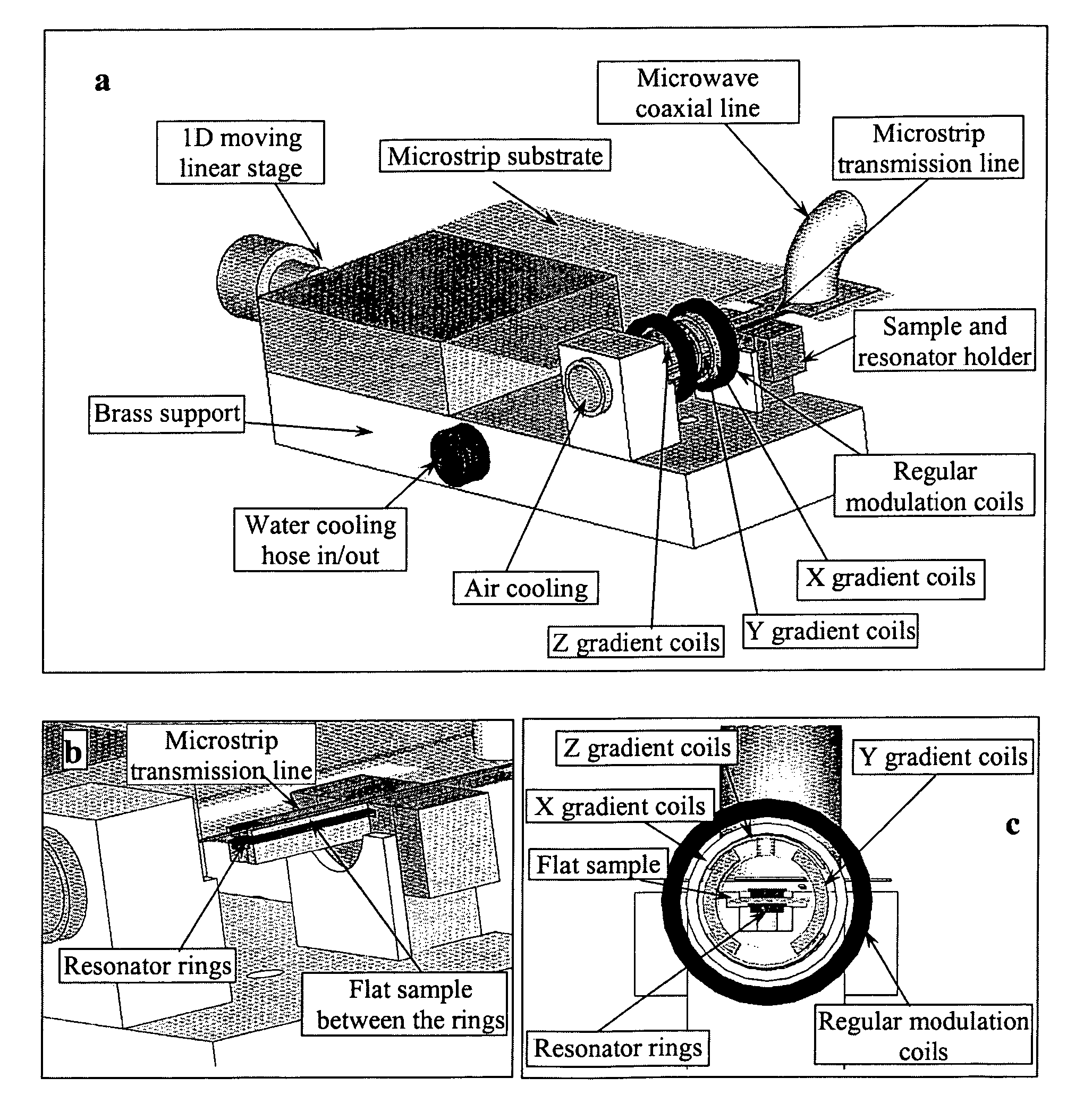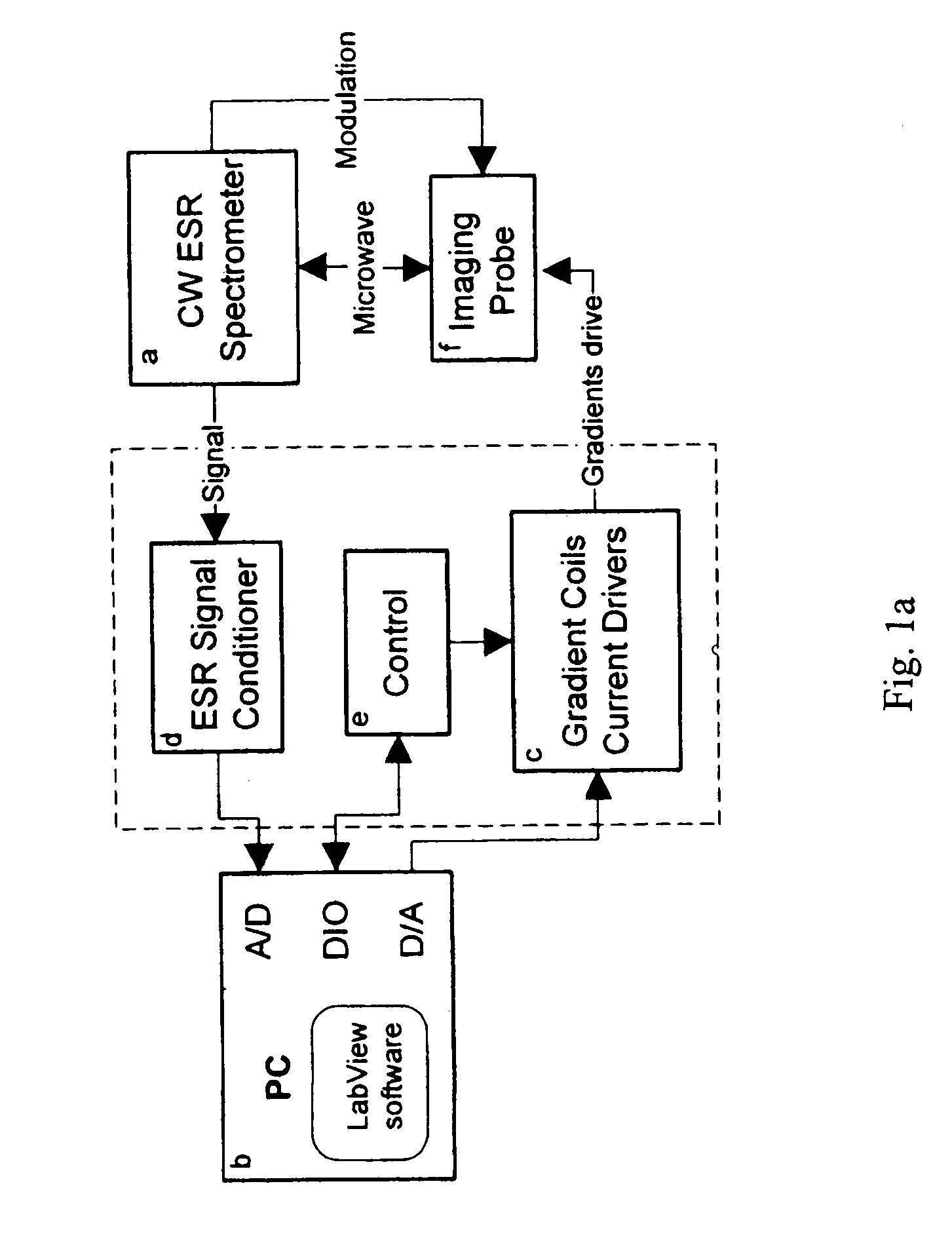Electron spin resonance microscope for imaging with micron resolution
a micron resolution, electron spin resonance technology, applied in the field of high resolution electron spin resonance (esr) imaging, can solve the problems of difficult image accuracy, inconclusive clinical diagnosis of histological samples, inability to observe moderately thick three-dimensional (3d) non-transparent samples, etc., to improve the snr, reduce artifacts, and improve the effect of permittivity
- Summary
- Abstract
- Description
- Claims
- Application Information
AI Technical Summary
Benefits of technology
Problems solved by technology
Method used
Image
Examples
Embodiment Construction
[0045]An Electron-Spin Resonance [ESR] (also referred to as Electron-Paramagnetic Resonance [EPR]) microscope is described, and methods of use of the microscope are presented. This imaging system overcomes the resolution limitations of existing NMR-based magnetic resonance microscopy and provides complimentary 3D information to optical microscopy, in a sub-micron resolution. The ESR microscope may be realized as a compact stand-alone instrument or as a retrofit compatible with existing ESR spectrometer instruments. Two distinct means of obtaining ESR micro-images, based on continuous-wave [CW] and pulsed signal acquisition methods, are possible with minor variation of the ESR microscope invention. As used in this application, the term “image” and its variants (e.g., images, imaging, and so forth, whether used as a noun or as a verb) refer to spatially resolved (1D, 2D, or 3D) information that can be obtained about the examined sample, or the act of obtaining such information, using ...
PUM
 Login to View More
Login to View More Abstract
Description
Claims
Application Information
 Login to View More
Login to View More - R&D
- Intellectual Property
- Life Sciences
- Materials
- Tech Scout
- Unparalleled Data Quality
- Higher Quality Content
- 60% Fewer Hallucinations
Browse by: Latest US Patents, China's latest patents, Technical Efficacy Thesaurus, Application Domain, Technology Topic, Popular Technical Reports.
© 2025 PatSnap. All rights reserved.Legal|Privacy policy|Modern Slavery Act Transparency Statement|Sitemap|About US| Contact US: help@patsnap.com



